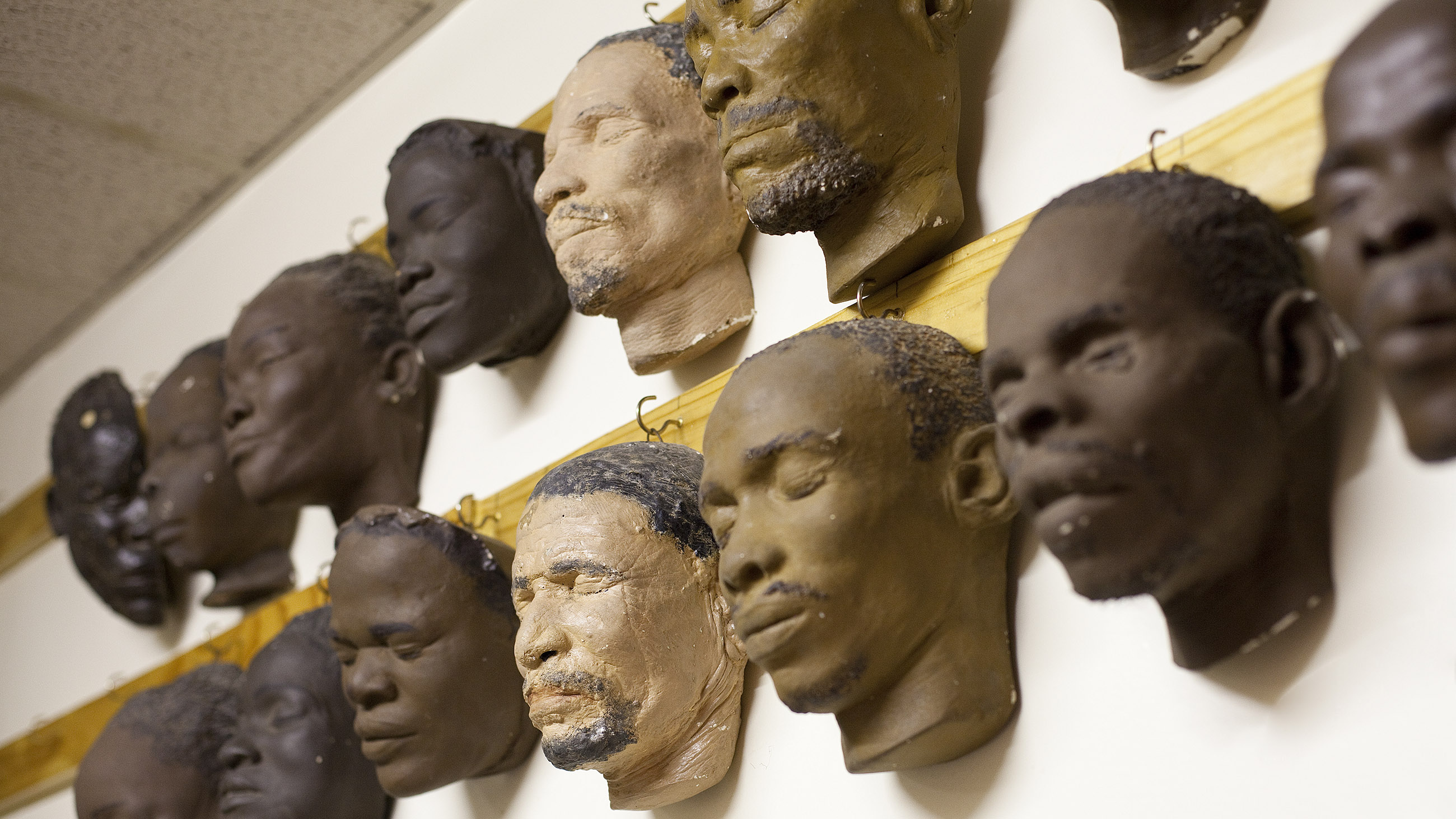Face Masks and Forensics
Unidentified bodies are not an uncommon occurrence in South Africa. The problem is particularly acute in Gauteng province, home to the sprawling capital of Johannesburg, where more than 4,000 bodies went unclaimed or unidentified between 2012 and 2015. An unspecified number of these were “veld bodies,” named after the uncultivated grasslands where they are often found. With no distinct clothing, documents or possessions, and with their flesh picked off by scavenging animals, police don’t have much to go on when trying to find out who these people were.
In response to this problem, police have often turned to forensic facial reconstruction software programs. While not reliable enough to stand up in court, these programs can help in the attempt to identify the victim, and perhaps the killer. Numerous studies have shown that internal facial features — the configuration of the eyes, nose and mouth — are important for a family member, friend or acquaintance to be able to recognize the victim’s face. But predicting these features from a skull — say, one picked clean by animals — has been long been known to produce inaccurate results, with many of the problems centered on trying to figure out the nose.
“Traditionally, the prediction of nose shape from the skull has been quite difficult,” said Professor Caroline Wilkinson, director of the Liverpool John Moores University’s Face Lab research unit. Most of the nose is made out of cartilage and soft tissue, with plates of supporting bone. This presents obvious challenges when trying to reconstruct a face or extrapolate from a skull. The evolution of computer tomography in the last decade has improved standards for predicting the soft nasal tissue, but it relies on data drawn mainly from Europeans and North Americans, Wilkinson said. “The number of individuals in that research population from an African background is quite limited.”
But now researchers at the University of Witwatersrand in Johannesburg think they may be able to fill that knowledge gap with an unusual — albeit ethically complicated — treasure trove of masks housed in one of the university’s museum collections. The university, in fact, has hundreds of masks in its health sciences building, plaster casts molded from the faces of Africans both dead and alive. A small sample of the life masks hang on a wall in the school’s Hunterian Museum, accompanied by plastic tags that indicate their origin: Turkana, Yao, Angolan, Tuareg, San, Zulu. But most — including masks taken from unclaimed bodies — are kept behind locked doors, away from the public.
Some of these masks come from students or from the school’s mortuary, but many were collected during a series of expeditions across the length of the continent, from Cape Town to Cairo, between 1927 and 1930. While they were created under racist pretenses, to show that African populations were “primitive” compared to Aryan races, their existence today raises ethical questions regarding whether they can serve an important function in validating the technology used in forensic facial reconstruction.
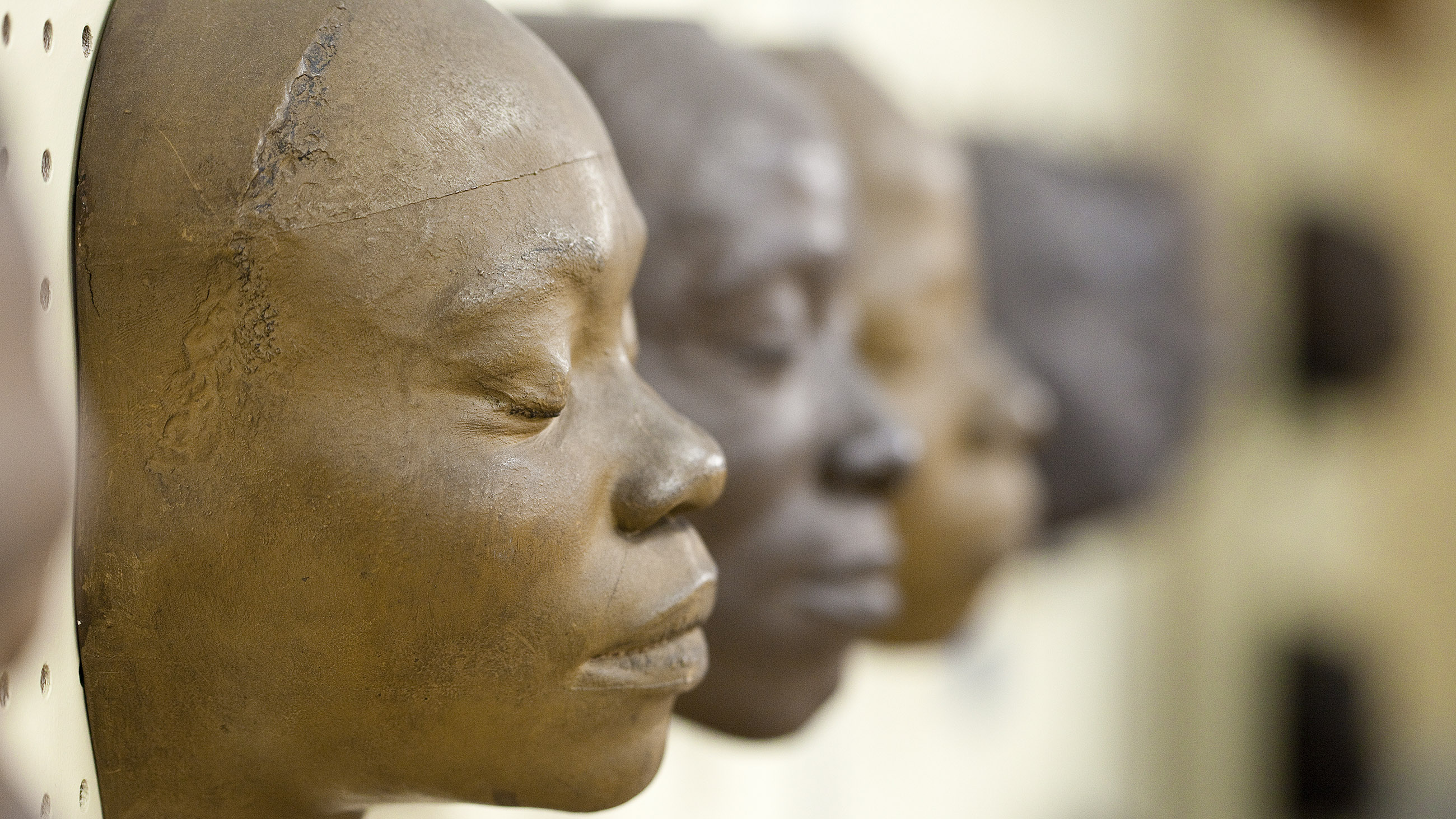
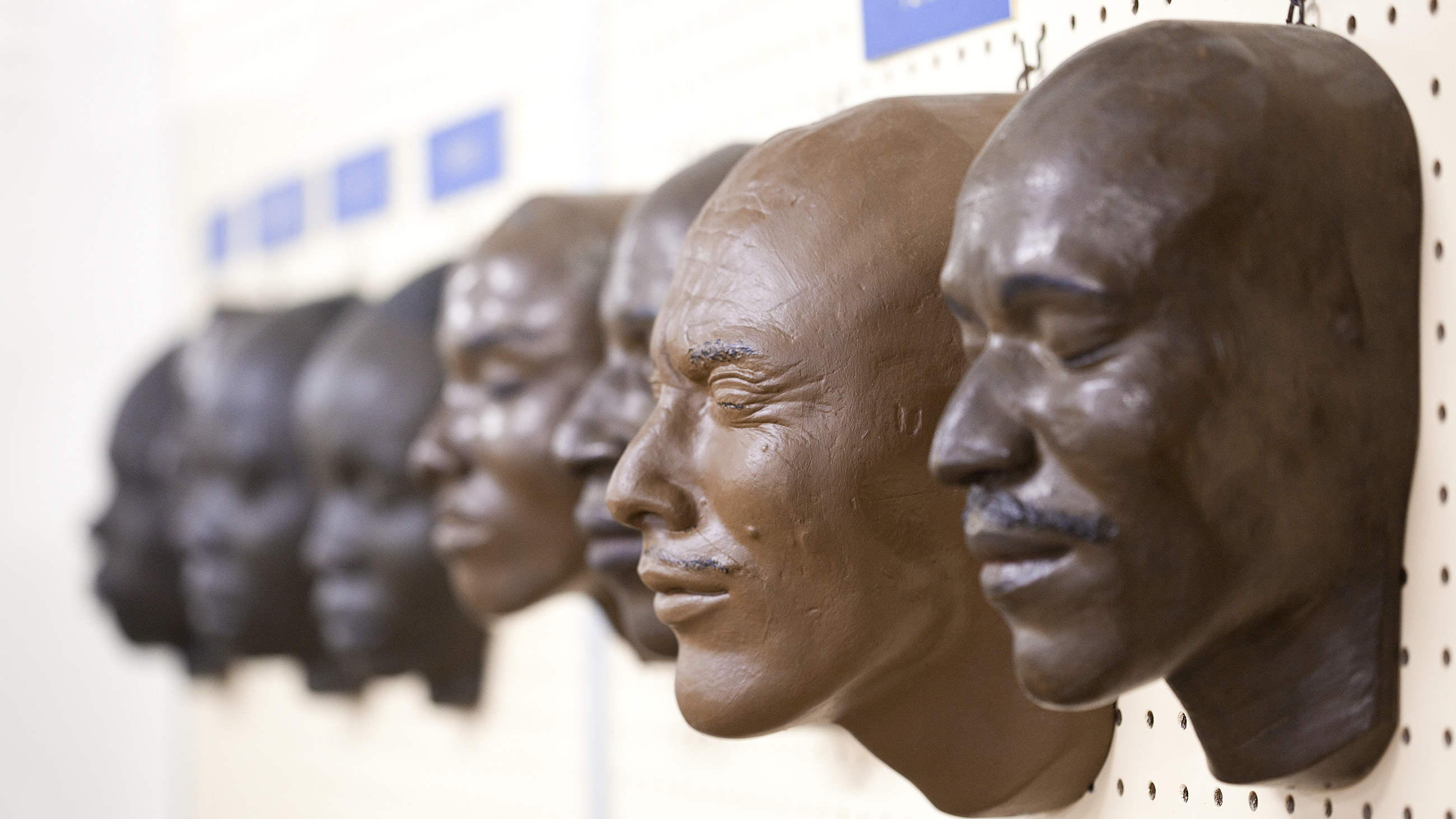
By collecting measurements from these masks and, where possible, comparing that data to skull measurements, researchers hope to determine whether the current facial reconstruction technology used by the South African Police Service (SAPS) is able to accurately reconstruct African faces. These validation studies have not previously been done for South African populations.
Dr. Tobias Houlton, a postdoctoral researcher at Witwatersrand (known locally as Wits), is waiting for ethical clearance to use the masks for this purpose. “When communicating with the SAPS, they have actually commented that the reconstruction of the nose is an issue. They feel that they are falling short, that something is not quite right,” he said; although so far the police have refused to discuss the problem publicly and did not respond to interview requests related to this story. Although the masks could play a role in improving the accuracy of victim identification, Houlton acknowledges that Wits’ ethics committee is unlikely to rubber stamp his project without careful consideration.
The university’s mask collection is named after Raymond Dart, who achieved global renown for his discovery of the human ancestor Australopithicus africanus, but the expeditions were led by Italian explorer and anthropologist Lidio Cipriani, one of the 42 signatories to the 1938 Manifesto of Race, which was a basis for fascist Italy’s race laws. The masks were used for morphometric analysis and racial comparison. A smaller collection of 120 life masks is on display in the museum of anthropology in Naples.
The masks are eye-catching, distinctive — and haunting. Eyes closed and lips sealed, the plaster faces in the Hunterian Museum, located on the second floor of the health sciences building, look as though they belong to swimmers coming up for air. The plaster has been carefully painted to replicate skin tone and details like eyelashes and facial hair. “They probably saw it as an advanced method of obtaining physical information [better] than just plain 2D photography,” Houlton said of the project.
In fact, after observing this technique on one of the the expeditions, Dart included face casting as part of the science curriculum at Wits where he was the head of the school of anatomy.
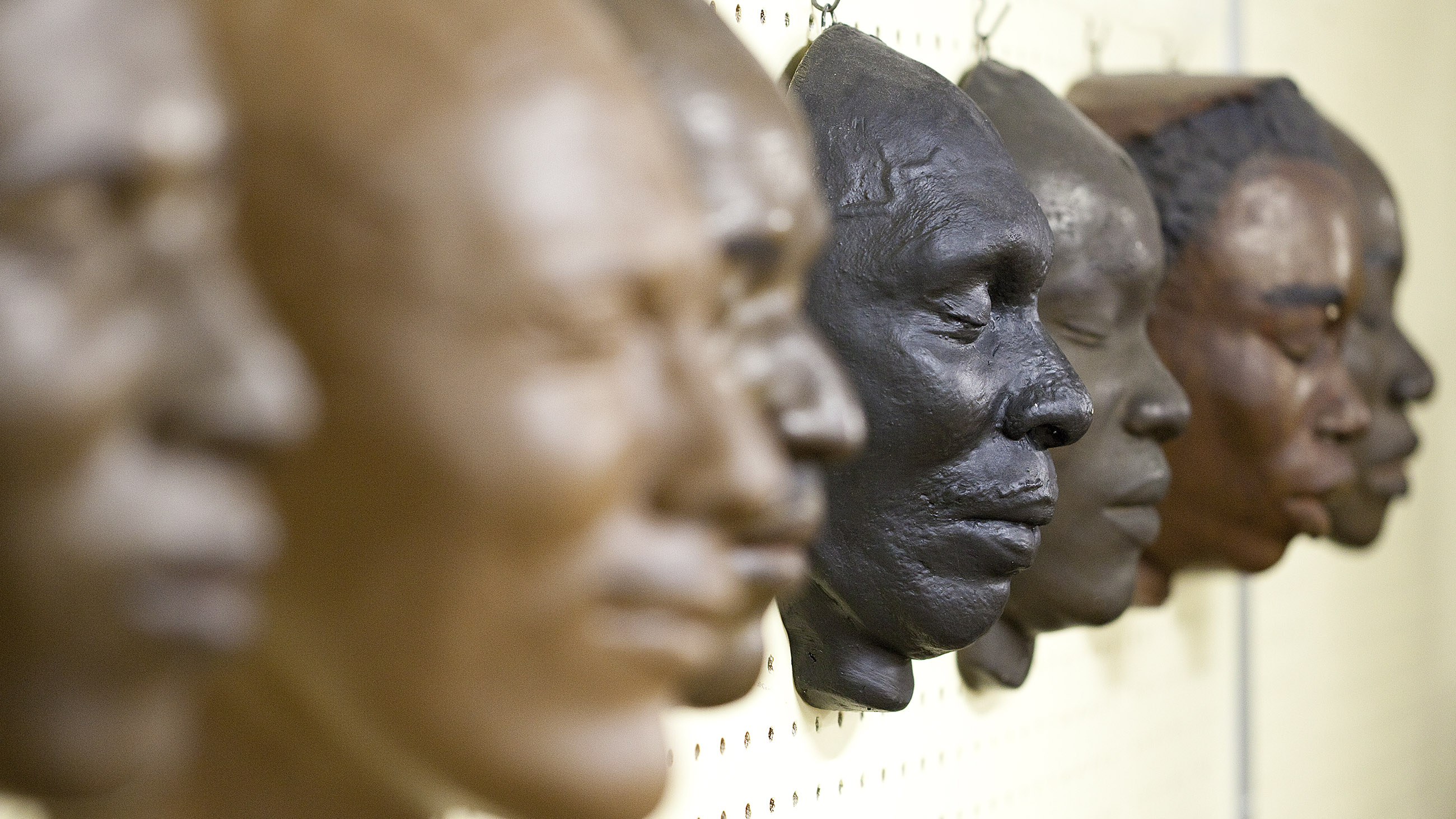
In 1969, Professor Beverly Kramer, now assistant dean for research and postgraduate support, was one of those students. “It was a bit creepy: you are totally covered in plaster of Paris, and the only means of breathing is through two straws in your nose,” Kramer said. “As it hardens and thickens, it releases heat. It didn’t burn, but it got quite hot.”This mold, known as the “negative”, was reinforced with more plaster and used to make a “positive”, which was painted. “It wasn’t easy because you think, ‘I’m white’, but then when you look at yourself you’re white and pink and brown and freckled,” Kramer added.
Kramer’s mask is among the others on display at the Hunterian Museum. But of course hers wasn’t created for the same purpose as the African life and death masks. The student masks were the result of a curriculum that emphasized casting — from face casts to resin casting of arterial systems in organs — whereas the other face masks were created to highlight racial differences.
“If I had to consider the face mask collection in light of the past science: research was used to show separation between the peoples of Africa and also to indicate primitive compared to derived populations,” said Brendon Billings, curator of collections and a lecturer at the school. “When I consider the masks in light of today: I consider the collection as a vehicle to promote continuity between the peoples of Africa.”
Behind a locked door, and down a private corridor also on the second floor, are the other masks, taken from the faces of the dead. They line the long passage behind the school’s mortuary, staring down at passersby. They are interspersed with life masks not shown in the collection, but it is easy to tell the difference. The dead faces are slack-jawed with eye sockets pursed like lips. Some of the mouths, particularly those of the children, are open.
These masks would have been taken after Cipriani’s expeditions, with Dart accompanying him on at least one of them. “Unfortunately, a lot of our death masks that we have in the collection were taken from mortuaries as unclaimed bodies,” Houlton said. “Obviously we have no written approval from these people [for their faces to be cast]. They would have had no concept of their bodies being used for these purposes at that time.” It’s this lack of formal consent that he thinks will be a major obstacle to ethical clearance for his validation studies.
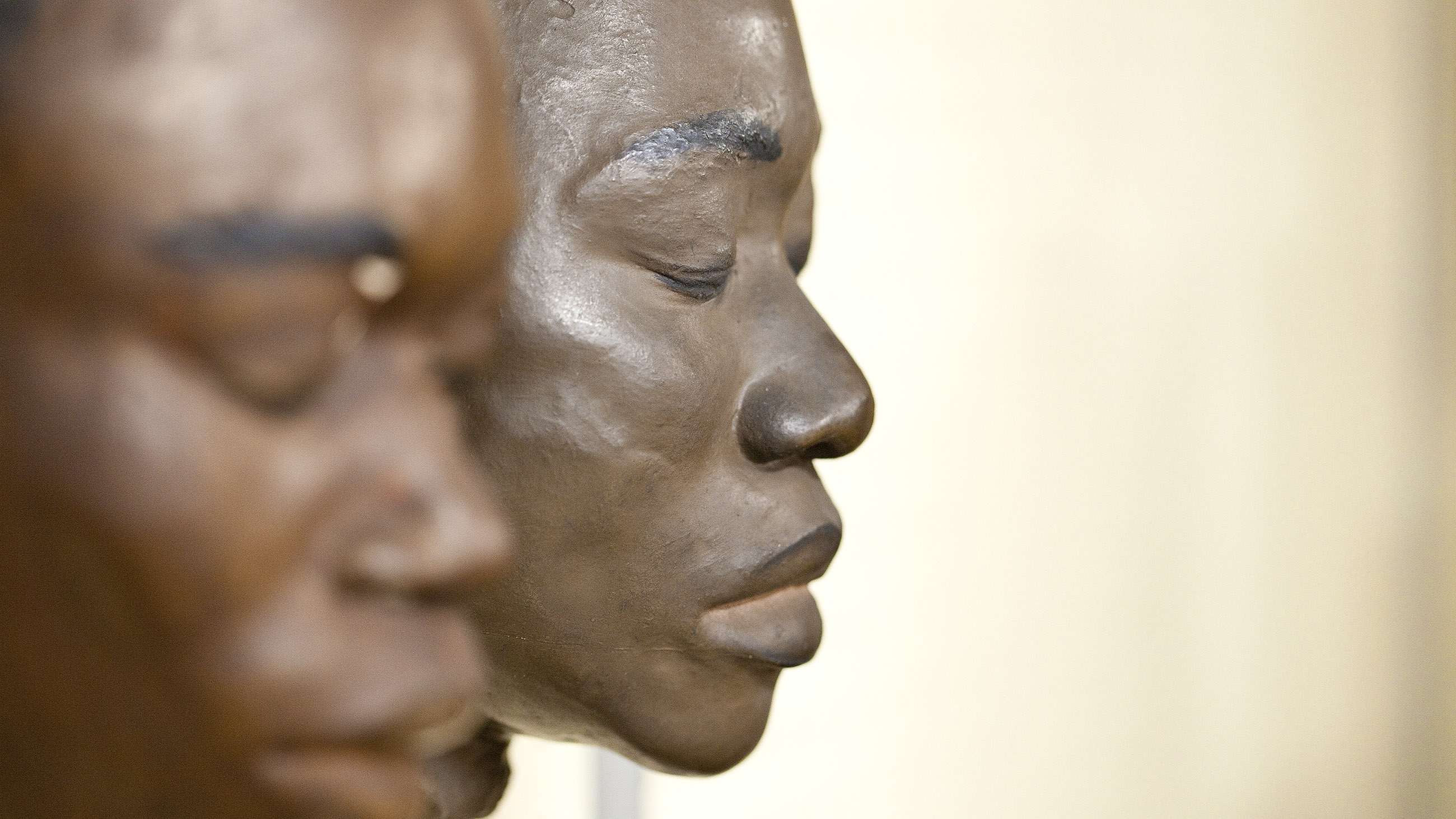
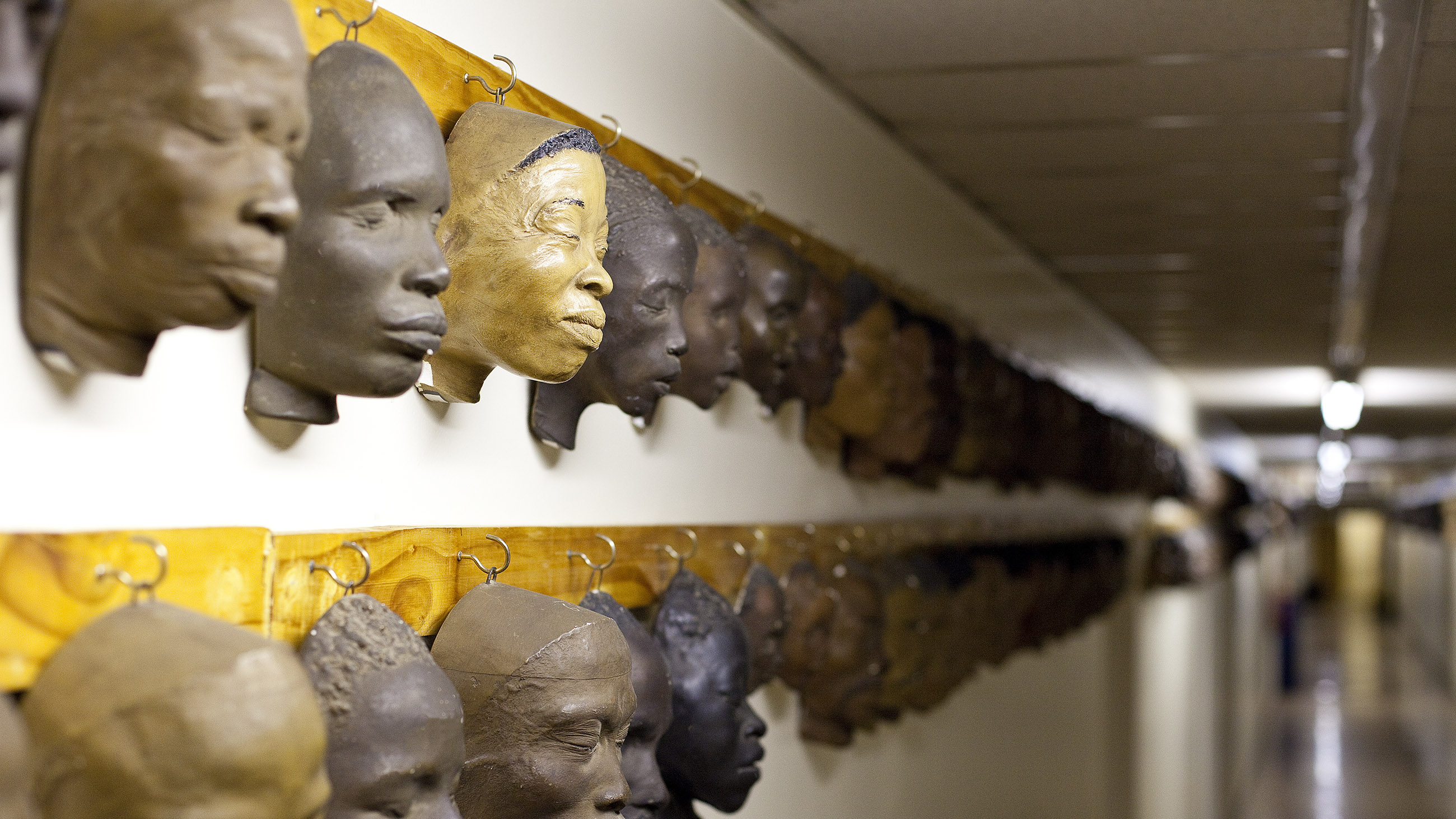
Still, biological anthropologist Alan Morris, a professor emeritus at the University of Cape Town, can envisage how at least the life masks could be ethically used for research. “The act of making the mask is a form of consent,” Morris said. “There is consent, but not scientific consent. Today, we would make them sign a form, but forty years ago that wasn’t done. The problem is that it isn’t possible to go back and do it, but that does not mean the data [itself is] not valid.”
While Morris said the life masks could be useful despite the distortion that happens when faces are cast, those that are cast after death might be too inaccurate. “You’ve gone from life to death and then to cast,” he explained. “Every time you move [on that spectrum], you lose some accuracy. There’s a difference between living people and dead people. There’s a difference between dead people and casts of dead people. And then there’s a difference between casts of dead people and measurements of casts of dead people. So, every time you jump, it becomes a little fuzzier.”
Whether Houlton will get clearance to use any of the masks remains to be seen. Today, South Africa’s research and ethical clearance regulations are stringent, particularly when it comes to research that involves communities and indigenous knowledge. The San bushmen community, for example, has a formal procedure facilitated by the San Council for anyone wanting to conduct research on them.
“If they really want to turn this around and benefit science and society, it would not be possible without a very intense community engagement process,” said Professor Keymanthri Moodley, director of Stellenbosch University’s Centre for Medical Ethics and Law. “But it could be quite challenging because some of these communities don’t exist any longer. This is also quite an extensive problem because it goes all the way into Africa. It’s not just South Africa where we have very strict research regulations.”
In addition to creating her own mask, when Kramer was an anatomy student, she performed dissections on unclaimed bodies as part of her degree. She said it was a concern of hers, being of Jewish birth, that she didn’t know where some of the bodies had come from. But still, she questioned whether that should negate the information learned from them.
“If we hadn’t asked people, should we just be throwing it all away and destroying it?” Kramer asked. “If one thinks of physiology, a lot of the information known by physiologists today was derived from people in [German] extermination camps … because the data is there, we use it, and it has contributed enormously to science, but at what expense to human life?”
Despite the difficulties, Houlton is committed to the idea of putting this research — namely the life masks — to good use. “The collection can be a relic of the past, but we want to take what positives we can from it, and bring them into the 21st century, where we can say this wasn’t done in vain,” he said. “We want to do some positive research that would help society at large, specifically in the realm of forensics.”
Sarah Wild is a freelance science journalist based in Johannesburg, South Africa.










